(Taken from the FSD webpage.)
The rate of macronutrient malnutrition is high in Kenya and often results in diseases and chronic illnesses that can be expensive to treat with traditional medicines. In many communities macronutrient malnutrition and related diseases can be effectively managed through proper nutrition and use of affordable herbal remedy alternatives to pharmaceuticals. Herbal remedies are particularly powerful as a familiar, effective, and less expensive alternative to other medications. Unfortunately, many community members lack awareness of or access to proper nutrition and herbal remedies.
The Society of Orphans and AIDS Network (SOAN) manage various healthcare, poverty eradication and microfinance initiatives along the Coastal Province of Kenya to prevent and mitigate the impact of AIDS and related opportunistic diseases on communities. FSD intern Edith Han worked with the members of SOAN and other community-based organizations to prepare educational posters and a resource booklet about nutrition and herbal remedies. These tangible resources will support efforts to expand awareness and empower CBO staff and community members to cost-effectively prevent and manage macronutrient malnutrition.
Future FSD interns have the opportunity to address macronutrient malnutrition and subsequent diseases through public awareness and education campaigns. Interns may also work to enhance public access to herbal remedies and the resources needed to improve general nutrition. Those interns with business skills may wish to promote the development and sale of herbal remedies as a business opportunity that supports community health, ensures the proper preparation and use of such remedies, and empowers the community to manage their health with local resources.
Wednesday, August 30, 2006
Wednesday, August 23, 2006
Kenya: Images of Mombasa
Boarding Kenya Airways in Nairobi Airport.
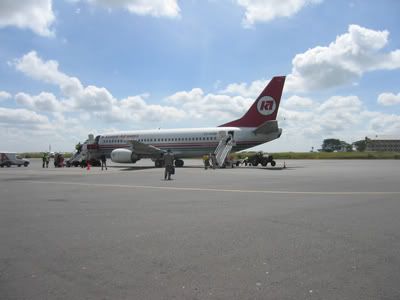
During orientation week (I know, don't we look so chill?)
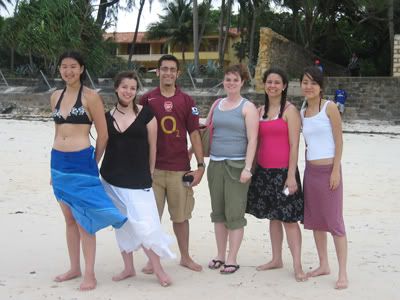
Inside a matatu (public transportation.)

Scenery...
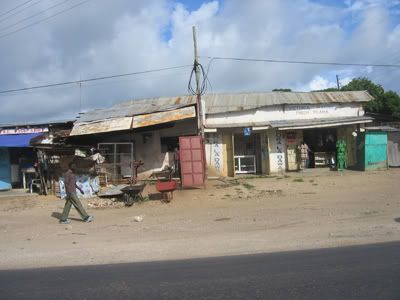
Housemade (Maurine). She's either 16 or 18. Either way, she's young.
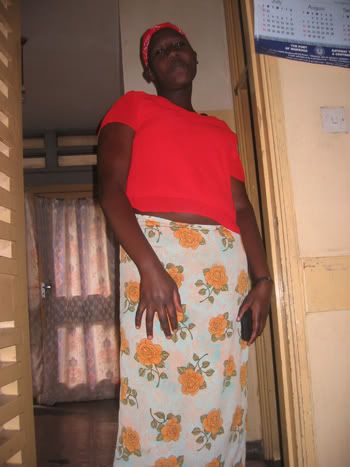
The goddamned ferry. I hate that thing. You have to be there to understand why.
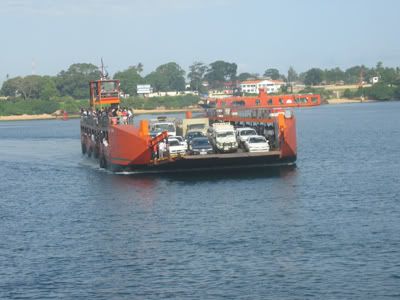
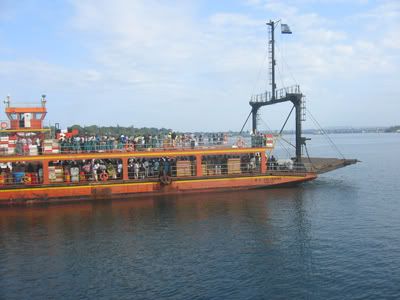
Outside of the school.
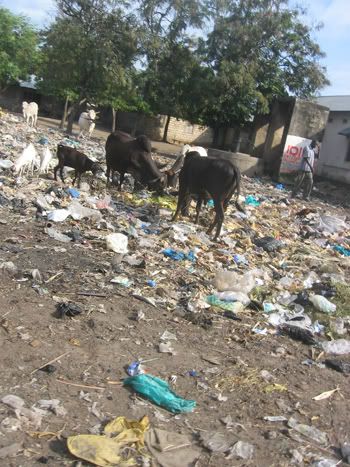
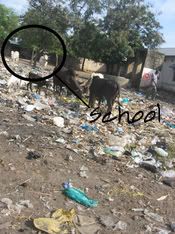
Classroom for Std 6 (6th grade).
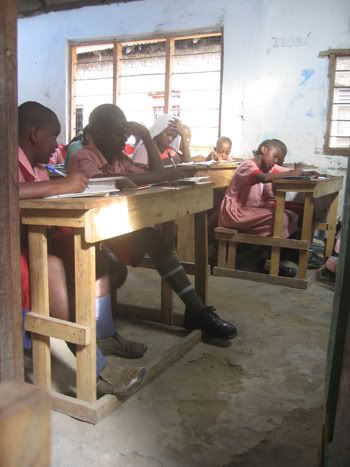
Logo for the office.

The office.
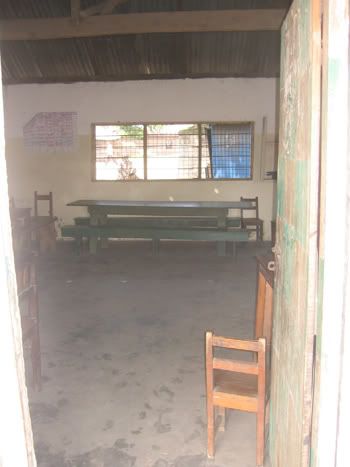
The office + people (Fred and Rohda).

My supervisor Michael Ker.
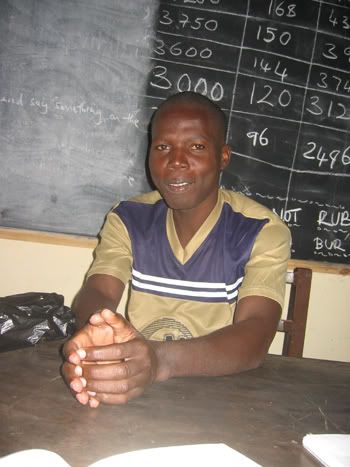
...Who apparently has no picture-taking skills.
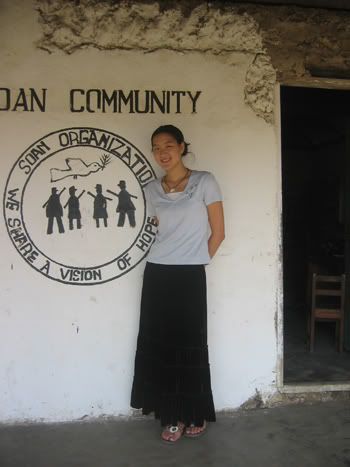
Burning garbage outside of the school.

Students.

Doing everything by hand at the office.
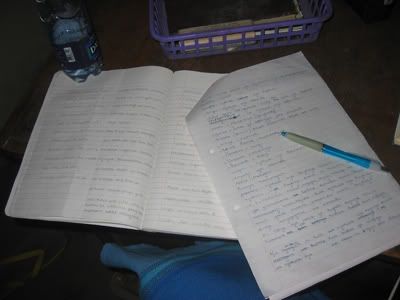
These pictures are from the Midterm Trip to Diani Beach.
You gotta love the potholes. Especially when it rains.

Sunrise!!!
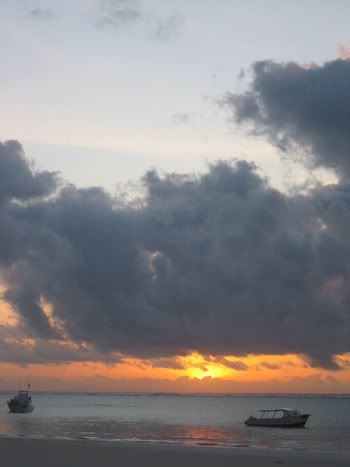
I really like the balance of this picture.
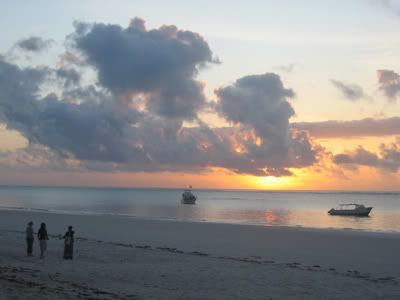
Giant snail!
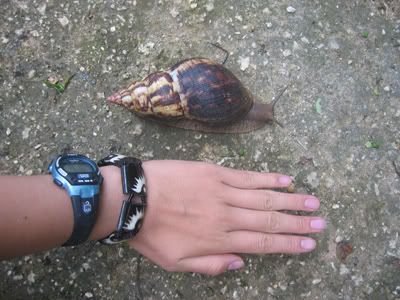
Cool shell, yah?
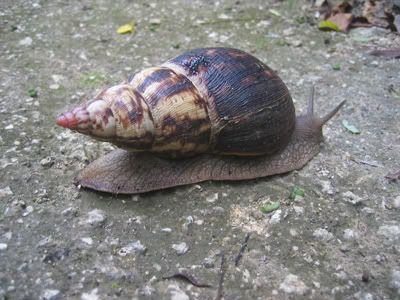
Back to work...
Teaching Std 6.
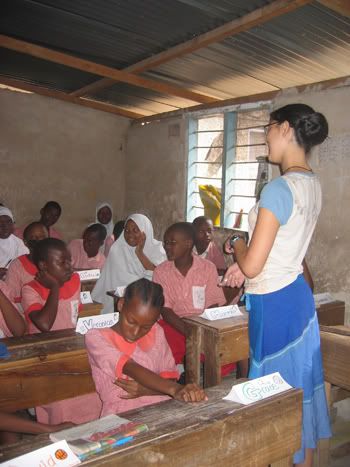
Friend (Chiri) where I lived.
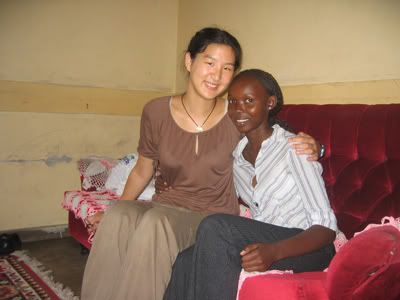
Friend (Garba) where I lived.
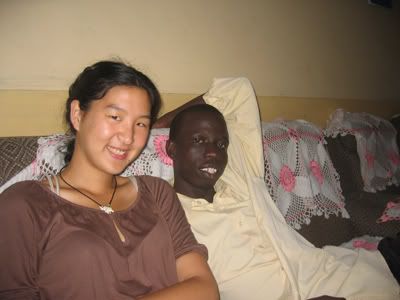
Host mom! Mama Rose! =) She was awesome.

Me and Maurine. I helped out in the kitchen and helped pick out peas and whatnot.
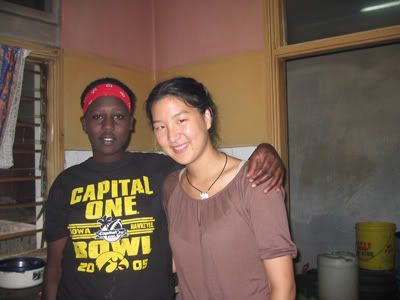
Teaching Std 7.
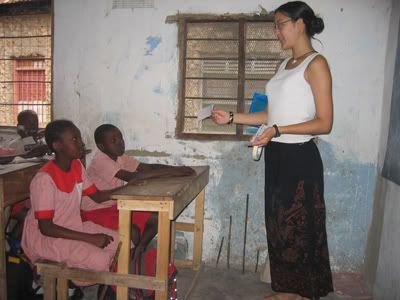
More Teaching Std 6.
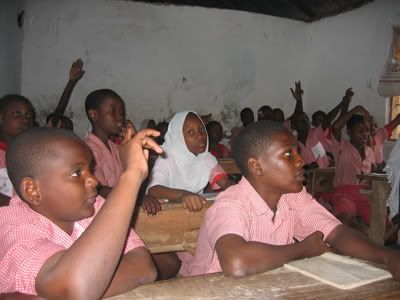
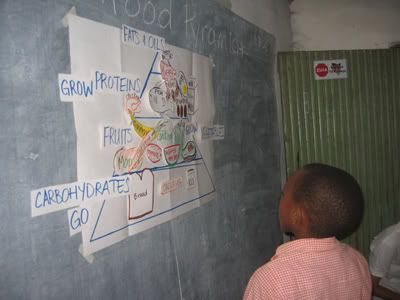
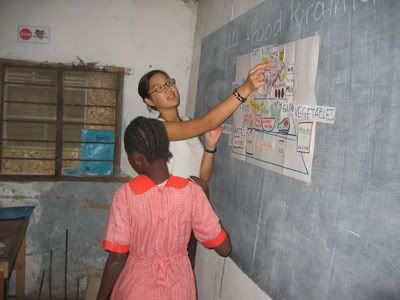
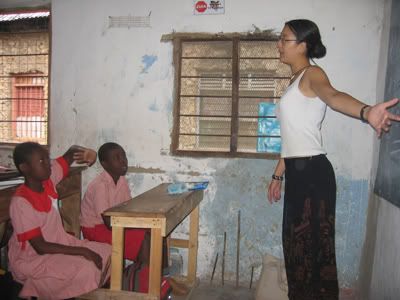
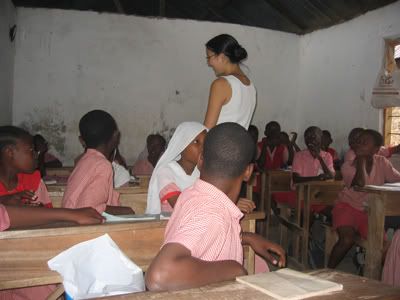
More working in the office.
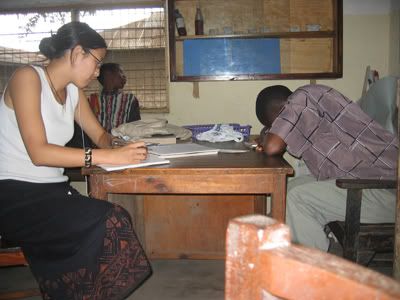
A common view outside of the office. How cute! ^_^ Unfortunately, you also knew that the dust and the dirt wasn't only dust and dirt...
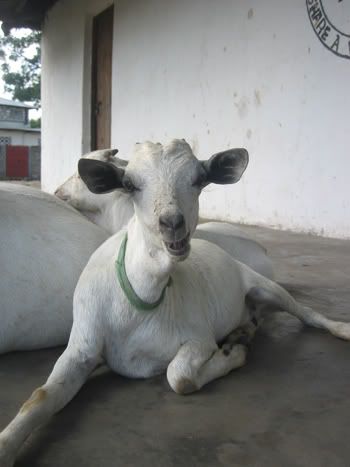
Working with Mama Rukia on herbal medicine stuff.
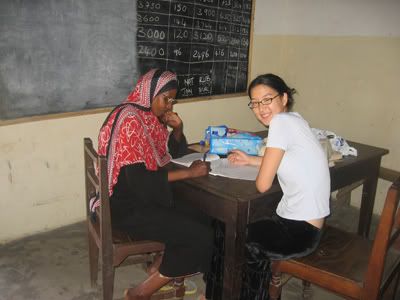
In a Swahili house. We were making masala with pilau that day.

Pictures for documentation for grant project.
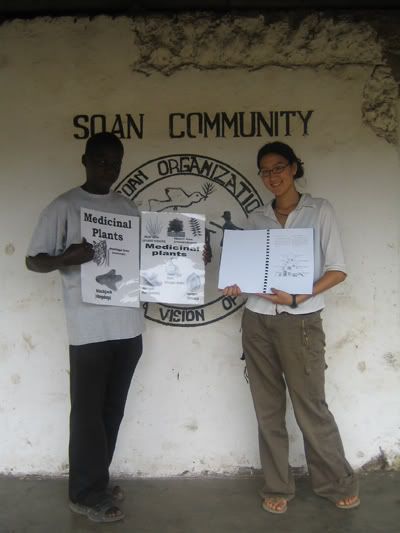

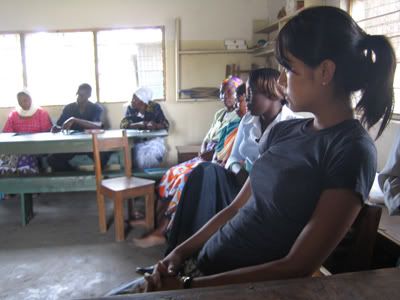
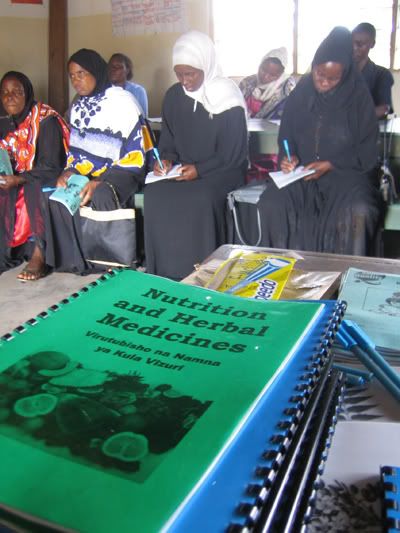
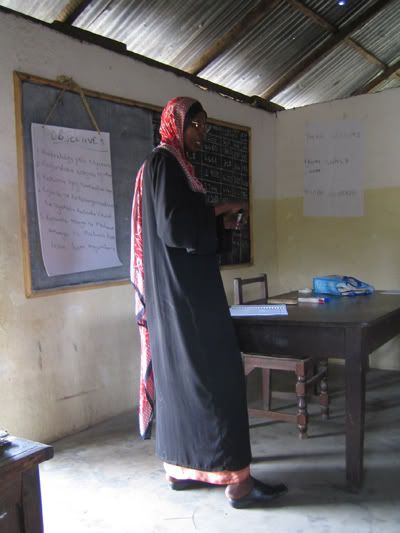
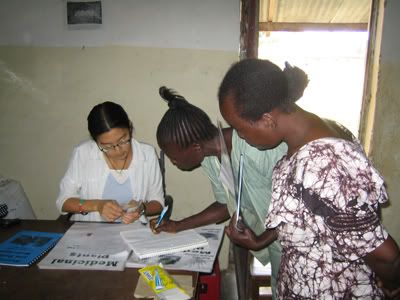
And then I came back home...
At the airport.
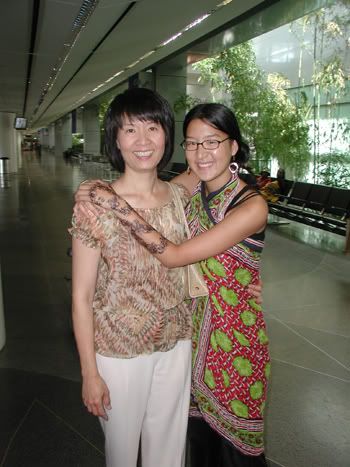

During orientation week (I know, don't we look so chill?)

Inside a matatu (public transportation.)

Scenery...

Housemade (Maurine). She's either 16 or 18. Either way, she's young.

The goddamned ferry. I hate that thing. You have to be there to understand why.


Outside of the school.


Classroom for Std 6 (6th grade).

Logo for the office.

The office.

The office + people (Fred and Rohda).

My supervisor Michael Ker.

...Who apparently has no picture-taking skills.

Burning garbage outside of the school.

Students.

Doing everything by hand at the office.

These pictures are from the Midterm Trip to Diani Beach.
You gotta love the potholes. Especially when it rains.

Sunrise!!!

I really like the balance of this picture.

Giant snail!

Cool shell, yah?

Back to work...
Teaching Std 6.

Friend (Chiri) where I lived.

Friend (Garba) where I lived.

Host mom! Mama Rose! =) She was awesome.

Me and Maurine. I helped out in the kitchen and helped pick out peas and whatnot.

Teaching Std 7.

More Teaching Std 6.





More working in the office.

A common view outside of the office. How cute! ^_^ Unfortunately, you also knew that the dust and the dirt wasn't only dust and dirt...

Working with Mama Rukia on herbal medicine stuff.

In a Swahili house. We were making masala with pilau that day.

Pictures for documentation for grant project.






And then I came back home...
At the airport.

Labels:
kenya
Thursday, June 29, 2006
Kenya: Grant Proposal
Date: June 29, 2006
Name of Intern: Edith Han
Name of Host Organization: Society of Orphans and AIDS Networking (SOAN) -- Likoni
Name of Host Organization Supervisor: Zulfa Hamisi
Project Title: Providing Training and Reference Materials on Nutrition and Herbal Medicines to Improve Health and Well-Being of the Community in the Coastal Region
Project Area: Health, Community Education
Purpose: Providing a resource booklet and posters on nutrition and herbal remedies and educating members of SOAN Likoni and of other community-based organizations in order to educate many communities in the coastal region of Kenya.
Amount Requested: $290.00
I. Description of Project
According to a publication by UNAIDS and the WHO, an estimated 150,000 people died due to AIDS in 2003. Data collected by the Republic of Kenya, Ministry of Health shows that the prevalence of malaria along the coast often exceeds 50 percent. These and many more common diseases interfere with the livelihoods of not only the individuals, but of the entire community. When member of society becomes sick, they are unable to work and therefore cannot provide for themselves or for any of those who are dependant. Not only this, they drain resources due to the need to buy medicines.
The Society of Orphans and AIDS Network (SOAN) was created to help combat these problems and to relieve the burden of disease from the surrounding community. They tackle these issues in multiple ways including providing training in health-care and microfinancing, educating the community on topics such as disease prevention and poverty eradication, and networking with other community-based organizations (CBOs) along the Coastal Province of Kenya. The purpose of this project is to provide SOAN and other CBOs with reference books, posters, and training in order to educate those in the coastal region on nutrition and herbal remedies for common illnesses.
Nutrition is a key factor in warding off illnesses and slowing the progression of these diseases. Unfortunately, malnutrition is still a constant problem in Kenya. In the African Journal of Food, Agriculture, Nutrition, and Development (Vol.3 No.2), Tom Hongo points out that micronutrient malnutrition is highly prevalent in Kenya, and that voids and gaps in nutritional knowledge, attitudes, and practice must be eradicated in order to allow the nation to further develop. Still, despite a balanced diet, illnesses will still greatly affect the community. Herbal medicines to help treat diseases and to relieve symptoms of chronic illnesses are an alternative to expensive medicines such as anti-retroviral treatments. They are cheap, effective, and easily accessible to the local population.
SOAN began an herbal medicine program last year to relieve symptoms for those suffering from HIV/AIDS. It was shown to be very success amongst the community, and this proposal is to help is further expand by providing more education resources and by reaching out to more communities.
Objectives
The overarching goal of this project is to improve the health of the communities in Mombasa, Kenya. Ameliorating the problem of malnutrition and providing information about accessible remedies to common illnesses within these different communities will be one step towards this end.
Methodology / Activities
In order to accomplish this goal, SOAN will put together a resource packet and make posters regarding nutrition and herbal remedies. This booklet will contain information on basic food groups, vitamins, minerals, constitutions of a balanced diet, and herbal remedies for common illnesses such as a cold, malaria, HIV/AIDS, and opportunistic infections. This information will be conveyed pictorially, in English, and in Kiswahili in order to reach as many people in the community as possible. Posters will be designed to emphasize the importance of having a balanced diet and to show the medicinal uses of herbs and plants commonly found within the community.
Furthermore, SOAN will hold a training-day on the importance of nutrition and the uses of these herbs. SOAN networks with multiple other CBOs in many different locations – Likoni, Kisauni, Vuga, and Kaloleni. Two members of SOAN who are herbal specialists will hold a one-day training for two people from each organization for a total of 36 trainees. During the training, these herbalists will explain what types of foods constitute a balanced meal and also show how to diagnose and to treat prevalent ailments with herbal medicines. At the end, these trainees will be given a copy of the reference booklet and of each poster as references for their offices in order for them to train other members of the organization and to outreach to the surrounding community that they work with.
Outcome
This proposal is the beginning of a widespread effort to improve nutrition and alleviate the burden of disease in the Mombasa area. Since these organizations are spread throughout the coastal region and work with different areas of the community, this training will reach a multitude of different populations. By training two members from other CBOs in different locations, the trainees can in turn train other members, caregivers, and health workers within their organizations and within the community.
These caregivers and health workers are the ones who interact with those in the neighboring community of that organization, and can pass the information to the local population. Since these reference books and posters that are distributed to other organizations will contain pictures and both English and Kiswahili, members in society will be able to use this information. As a result, information on nutrition and accessible treatments to common illnesses will benefit a large number of communities in a widespread area.
Target Population
The immediate beneficiaries will be the trainees and their respective organizations as they receive training and reference materials. The indirect beneficiaries will be the other members of the organizations and their surrounding communities. In the long term, the multitude of areas with which SOAN networks will benefit through further training and education of the population.
V. Organizational Capacity
SOAN was created in hopes of supporting the surrounding communities that have been afflicted with poverty and disease so that they can become self-reliant. In order to accomplish this goal, this organization has developed six different programs to tackle this issue from many sides. These programs are: orphan support, home-based care, youth, microfinancing, community education, and networking with other community-based organizations. For the youth and the orphans, SOAN holds fun events, scouting activities, and education workshops on HIV/AIDS and drug abuse. Additionally, SOAN also operates a local primary school that has recently begun a lunch program to help feed the orphan students. The members have microfinancing trainings and programs to allow members of the community to network and begin self-sustaining income-generating activities. The home-based care program provides trainings to caregivers, patient referrals, and mobilizes resources. As for community education, SOAN holds meetings about HIV/AIDS, sanitation, and poverty eradication. Finally, SOAN networks with a wide range of other community-based organizations in different districts of the coastal region in order to share different resources.
SOAN began an effective herbal medicine program to relieve symptoms for those suffering from HIV/AIDS. This program was evaluated by seeing whether or not the local community began to use herbal remedies, and it was a success. This shows that SOAN is effective in communicating such information and carrying out health education outreaches. Through their networking program, SOAN demonstrates that it holds its member organizations accountable and that it will be able to monitor such an extensive project. Members are constantly working together to ensure the progress of these programs, and this demonstrates that SOAN has many committed individuals and has the power and the desire to carry through and reach many people within different communities.
VI. Intern Capacity
As an intern, I will be able to facilitate the project as the booklet is being put together. Since I have an interest in the biological sciences and have taken many classes on nutrition and diseases, I will be able to provide input and more information. Not only this, even though I do not have an extensive background in herbal medicines and am not as well established with the other community-based organizations, I have background in outreaching and teaching health education, and can offer suggestions in how to create a more effective training day. Finally, I will be able to help facilitate and coordinate the training day. In the past, I have helped coordinate and organize such functions, and can interact with the attendees and assure that everything runs smoothly.
VII. Sustainability
This project will promote a lasting solution to the need of educating communities about having a balanced and nutritious diet and informing them of the uses of herbal medicines to cure or relieve symptoms of extremely prevalent diseases. By supplying not only SOAN Likoni, but multiple other community-based organizations with whom they network, an organized, hard-copy of necessary information to maintain a healthy and productive livelihood and with posters emphasizing nutrition and the importance of herbal remedies, these organizations will be able to continue to hold trainings and to educate the community in the future. Moreover, people in the surrounding areas will be able to go to these organizations for references on specific ailments if the need arises.
SOAN has shown the ability to maintain such community education and networking programs. By being provided with these materials, they will be able to further educate more people more effectively. Since they already have outreach programs and these resources will last a long time, there will not be any immediate need of resources in order to sustain this project.
Name of Intern: Edith Han
Name of Host Organization: Society of Orphans and AIDS Networking (SOAN) -- Likoni
Name of Host Organization Supervisor: Zulfa Hamisi
Project Title: Providing Training and Reference Materials on Nutrition and Herbal Medicines to Improve Health and Well-Being of the Community in the Coastal Region
Project Area: Health, Community Education
Purpose: Providing a resource booklet and posters on nutrition and herbal remedies and educating members of SOAN Likoni and of other community-based organizations in order to educate many communities in the coastal region of Kenya.
Amount Requested: $290.00
I. Description of Project
According to a publication by UNAIDS and the WHO, an estimated 150,000 people died due to AIDS in 2003. Data collected by the Republic of Kenya, Ministry of Health shows that the prevalence of malaria along the coast often exceeds 50 percent. These and many more common diseases interfere with the livelihoods of not only the individuals, but of the entire community. When member of society becomes sick, they are unable to work and therefore cannot provide for themselves or for any of those who are dependant. Not only this, they drain resources due to the need to buy medicines.
The Society of Orphans and AIDS Network (SOAN) was created to help combat these problems and to relieve the burden of disease from the surrounding community. They tackle these issues in multiple ways including providing training in health-care and microfinancing, educating the community on topics such as disease prevention and poverty eradication, and networking with other community-based organizations (CBOs) along the Coastal Province of Kenya. The purpose of this project is to provide SOAN and other CBOs with reference books, posters, and training in order to educate those in the coastal region on nutrition and herbal remedies for common illnesses.
Nutrition is a key factor in warding off illnesses and slowing the progression of these diseases. Unfortunately, malnutrition is still a constant problem in Kenya. In the African Journal of Food, Agriculture, Nutrition, and Development (Vol.3 No.2), Tom Hongo points out that micronutrient malnutrition is highly prevalent in Kenya, and that voids and gaps in nutritional knowledge, attitudes, and practice must be eradicated in order to allow the nation to further develop. Still, despite a balanced diet, illnesses will still greatly affect the community. Herbal medicines to help treat diseases and to relieve symptoms of chronic illnesses are an alternative to expensive medicines such as anti-retroviral treatments. They are cheap, effective, and easily accessible to the local population.
SOAN began an herbal medicine program last year to relieve symptoms for those suffering from HIV/AIDS. It was shown to be very success amongst the community, and this proposal is to help is further expand by providing more education resources and by reaching out to more communities.
Objectives
The overarching goal of this project is to improve the health of the communities in Mombasa, Kenya. Ameliorating the problem of malnutrition and providing information about accessible remedies to common illnesses within these different communities will be one step towards this end.
Methodology / Activities
In order to accomplish this goal, SOAN will put together a resource packet and make posters regarding nutrition and herbal remedies. This booklet will contain information on basic food groups, vitamins, minerals, constitutions of a balanced diet, and herbal remedies for common illnesses such as a cold, malaria, HIV/AIDS, and opportunistic infections. This information will be conveyed pictorially, in English, and in Kiswahili in order to reach as many people in the community as possible. Posters will be designed to emphasize the importance of having a balanced diet and to show the medicinal uses of herbs and plants commonly found within the community.
Furthermore, SOAN will hold a training-day on the importance of nutrition and the uses of these herbs. SOAN networks with multiple other CBOs in many different locations – Likoni, Kisauni, Vuga, and Kaloleni. Two members of SOAN who are herbal specialists will hold a one-day training for two people from each organization for a total of 36 trainees. During the training, these herbalists will explain what types of foods constitute a balanced meal and also show how to diagnose and to treat prevalent ailments with herbal medicines. At the end, these trainees will be given a copy of the reference booklet and of each poster as references for their offices in order for them to train other members of the organization and to outreach to the surrounding community that they work with.
Outcome
This proposal is the beginning of a widespread effort to improve nutrition and alleviate the burden of disease in the Mombasa area. Since these organizations are spread throughout the coastal region and work with different areas of the community, this training will reach a multitude of different populations. By training two members from other CBOs in different locations, the trainees can in turn train other members, caregivers, and health workers within their organizations and within the community.
These caregivers and health workers are the ones who interact with those in the neighboring community of that organization, and can pass the information to the local population. Since these reference books and posters that are distributed to other organizations will contain pictures and both English and Kiswahili, members in society will be able to use this information. As a result, information on nutrition and accessible treatments to common illnesses will benefit a large number of communities in a widespread area.
Target Population
The immediate beneficiaries will be the trainees and their respective organizations as they receive training and reference materials. The indirect beneficiaries will be the other members of the organizations and their surrounding communities. In the long term, the multitude of areas with which SOAN networks will benefit through further training and education of the population.
V. Organizational Capacity
SOAN was created in hopes of supporting the surrounding communities that have been afflicted with poverty and disease so that they can become self-reliant. In order to accomplish this goal, this organization has developed six different programs to tackle this issue from many sides. These programs are: orphan support, home-based care, youth, microfinancing, community education, and networking with other community-based organizations. For the youth and the orphans, SOAN holds fun events, scouting activities, and education workshops on HIV/AIDS and drug abuse. Additionally, SOAN also operates a local primary school that has recently begun a lunch program to help feed the orphan students. The members have microfinancing trainings and programs to allow members of the community to network and begin self-sustaining income-generating activities. The home-based care program provides trainings to caregivers, patient referrals, and mobilizes resources. As for community education, SOAN holds meetings about HIV/AIDS, sanitation, and poverty eradication. Finally, SOAN networks with a wide range of other community-based organizations in different districts of the coastal region in order to share different resources.
SOAN began an effective herbal medicine program to relieve symptoms for those suffering from HIV/AIDS. This program was evaluated by seeing whether or not the local community began to use herbal remedies, and it was a success. This shows that SOAN is effective in communicating such information and carrying out health education outreaches. Through their networking program, SOAN demonstrates that it holds its member organizations accountable and that it will be able to monitor such an extensive project. Members are constantly working together to ensure the progress of these programs, and this demonstrates that SOAN has many committed individuals and has the power and the desire to carry through and reach many people within different communities.
VI. Intern Capacity
As an intern, I will be able to facilitate the project as the booklet is being put together. Since I have an interest in the biological sciences and have taken many classes on nutrition and diseases, I will be able to provide input and more information. Not only this, even though I do not have an extensive background in herbal medicines and am not as well established with the other community-based organizations, I have background in outreaching and teaching health education, and can offer suggestions in how to create a more effective training day. Finally, I will be able to help facilitate and coordinate the training day. In the past, I have helped coordinate and organize such functions, and can interact with the attendees and assure that everything runs smoothly.
VII. Sustainability
This project will promote a lasting solution to the need of educating communities about having a balanced and nutritious diet and informing them of the uses of herbal medicines to cure or relieve symptoms of extremely prevalent diseases. By supplying not only SOAN Likoni, but multiple other community-based organizations with whom they network, an organized, hard-copy of necessary information to maintain a healthy and productive livelihood and with posters emphasizing nutrition and the importance of herbal remedies, these organizations will be able to continue to hold trainings and to educate the community in the future. Moreover, people in the surrounding areas will be able to go to these organizations for references on specific ailments if the need arises.
SOAN has shown the ability to maintain such community education and networking programs. By being provided with these materials, they will be able to further educate more people more effectively. Since they already have outreach programs and these resources will last a long time, there will not be any immediate need of resources in order to sustain this project.
Labels:
kenya
Friday, June 23, 2006
Kenya: Jambo.
I am working through a San Francisco-based Non-Governmental Organization (NGO) Foundation for Sustainable Development in the coastal region of Kenya. I'm living on the island near Mombasa town, but I work in Likoni (on the mainland) for SOAN, Society for Orphans and AIDS Networking.
I'm teaching 6th and 7th grade science in a school with no windows and no electricity. I am working on a grant proposal that will help SOAN and I create a booklet on nutrition and herbal medicine and hold a training on the information with neighboring Community-Based Organizations (CBOs). We'll see.
Take care.
I'm teaching 6th and 7th grade science in a school with no windows and no electricity. I am working on a grant proposal that will help SOAN and I create a booklet on nutrition and herbal medicine and hold a training on the information with neighboring Community-Based Organizations (CBOs). We'll see.
Take care.
Labels:
kenya
Sunday, April 2, 2006
Guatemala: The Picture Archive
I was able to go work at an orphanage for HIV+ orphans in Guatemala with Cross-Cultural Solutions (CCS). I went during spring break of my junior year (2006). This was my first time going abroad by myself to a place where I knew nobody to work. Unfortunately, there isn't much of written documentation, but there are pictures. Lots of pictures.
Here we go:
Holy crap, I'm on the plane and going. ...This will be interesting.
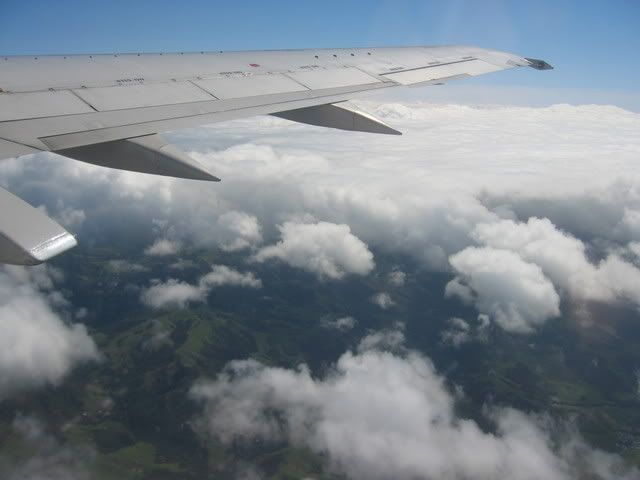
The group when we arrived.
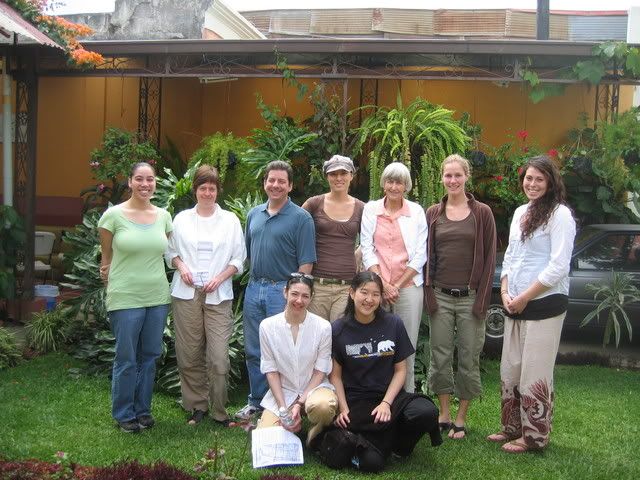
Unfortunately, we were originally not allowed to take photos of the orphanage that we were working in. Because of the stigma that goes along with being HIV+, they were afraid that these pictures might be used against the children in the future. The orphanage, though, is amazing. They are being supported by UNICEF, and not only does the organization provide care and anti-retroviral (ARV) treatment to the orphans, but they also provide free treatment to those in the area whom are too poor to afford the medicines themselves. Additionally, the patients are provided free dental care, and other medical services.
So, for now, lots of pictures of us having fun in Guatemala.
Antigua. Antigua is an amazingly tourist-y place. Still, the architecture and the culture of the natives were able to shine through. Personally, I was torn. I was amazed and awed by the richness of the culture--the bright colors, the beautiful people, amazing handicrafts, the breath-taking architecture--and I wanted to take pictures to document everything, but at the same time, I felt horrible watching people live in poverty and subjecting themselves to be just a display for rich tourists. Still, I suppose I still have some pictures.
When we first arrived in Antigua:
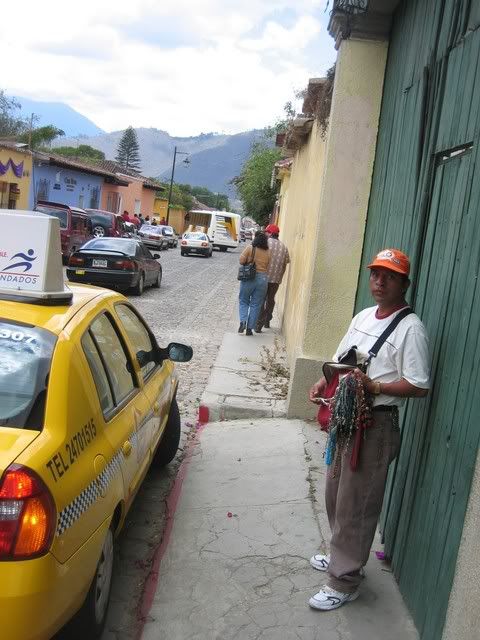
Inside a hotel.
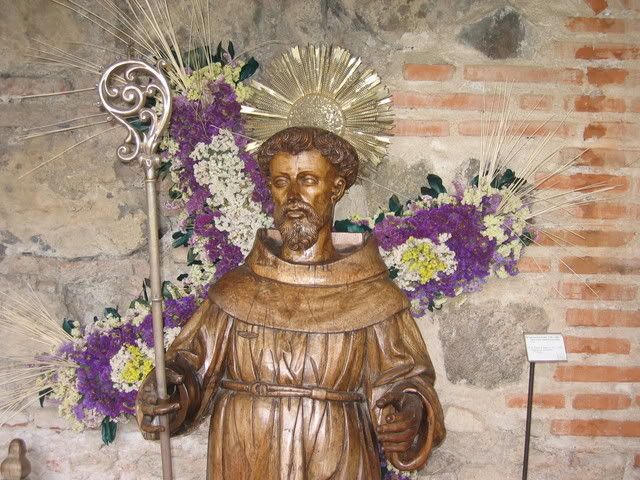
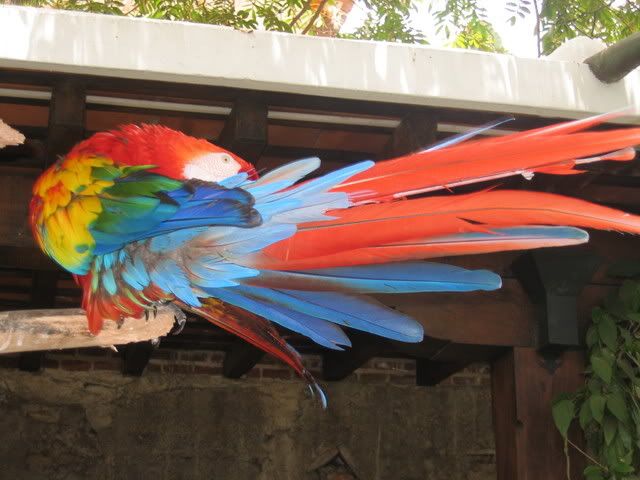
On the streets.
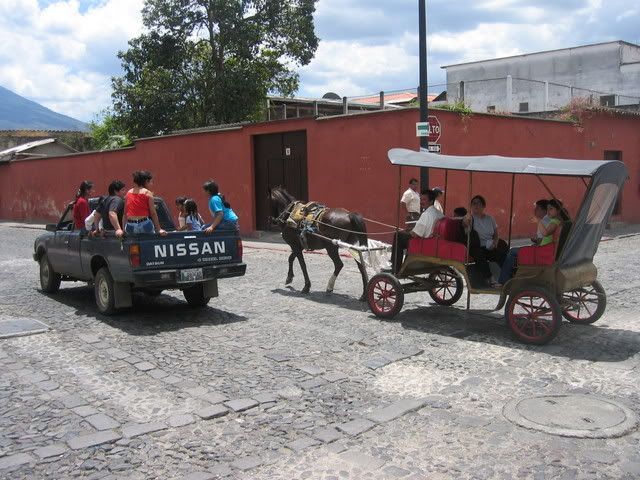
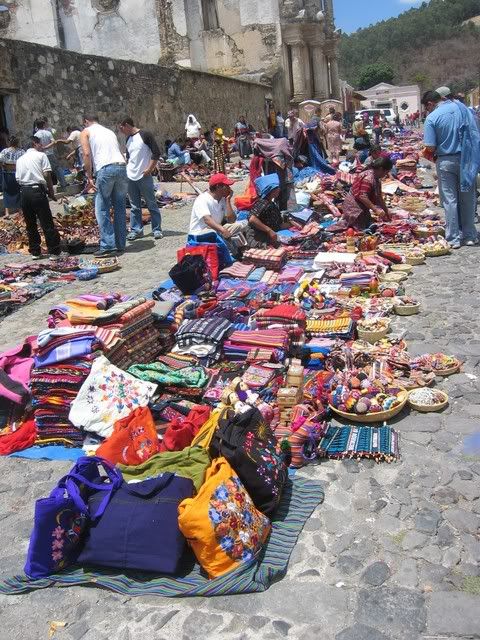
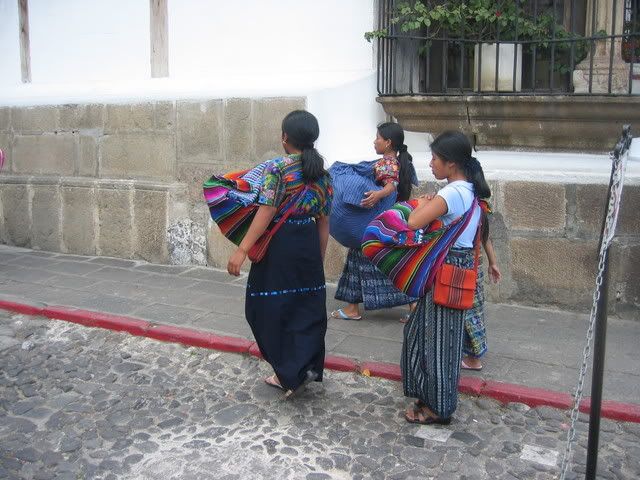
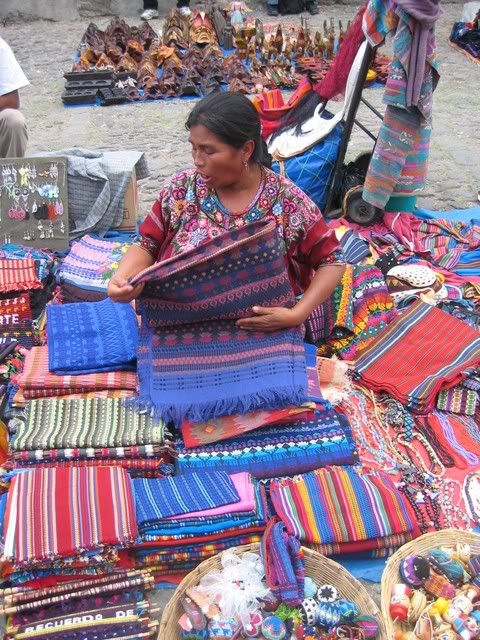
The famous Volcan de Agua (Volcano of Water) overlooking Antigua.
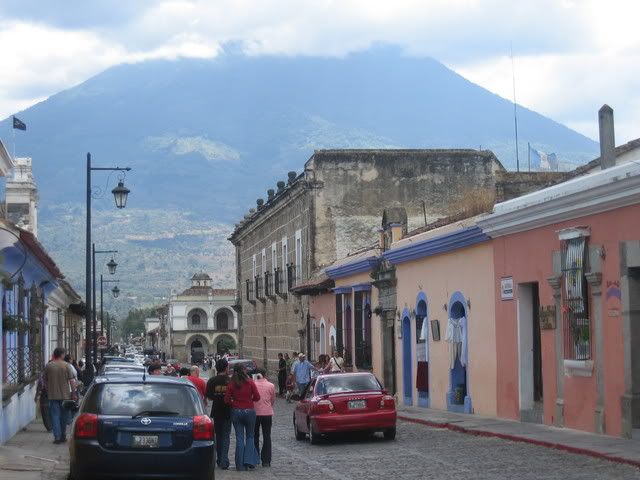
A... city hall type thing...?
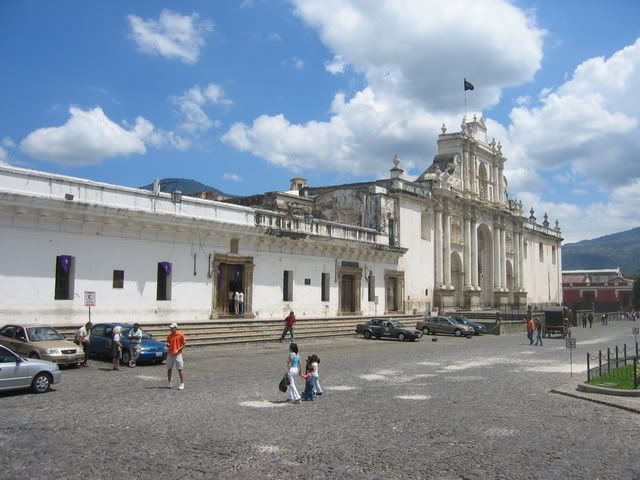
We had lunch somewhere. They had an amazing jalapeno turkey noodle soup.
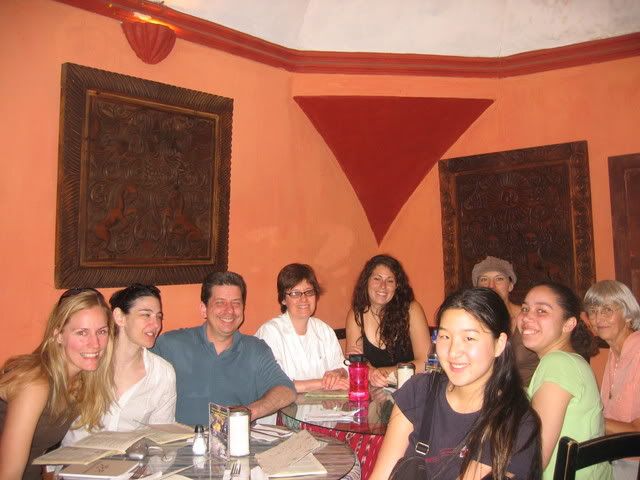
The beer in Guatemala.
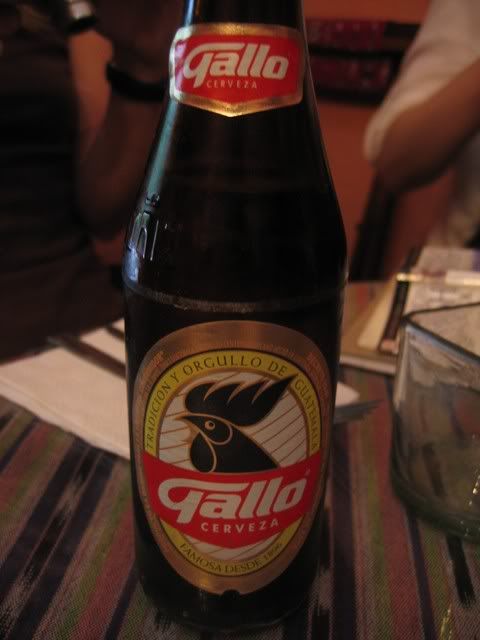
And more pictures...
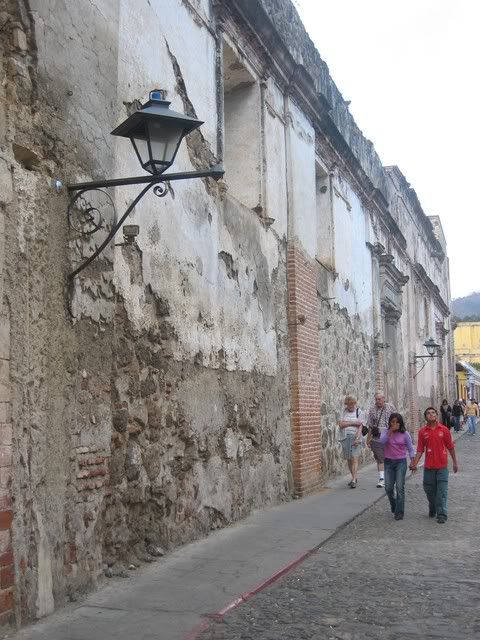
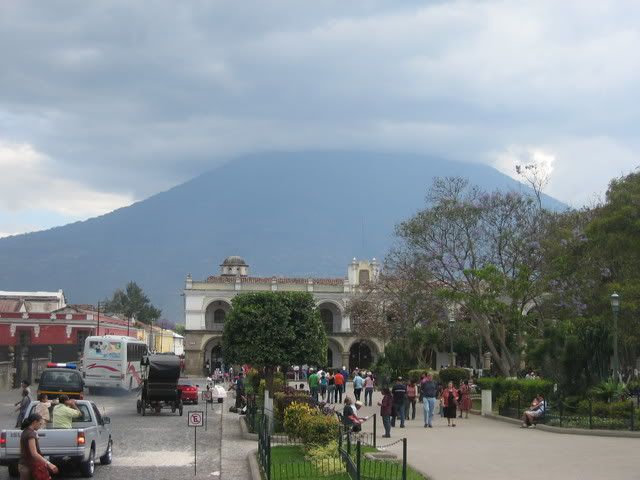
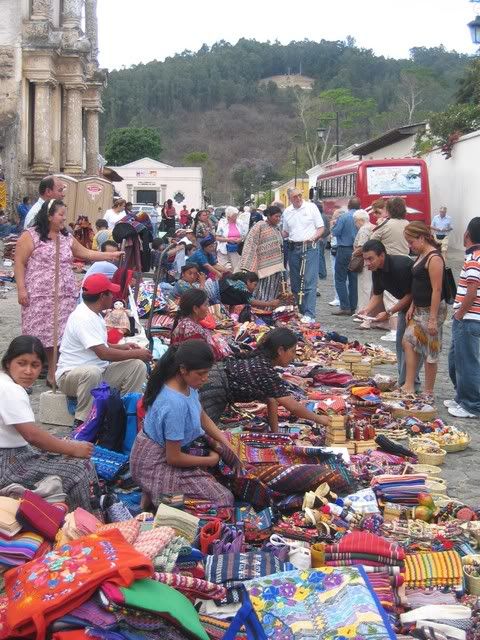
Probably one of my favorite pictures from Guatemala.

Mangos on a stick!
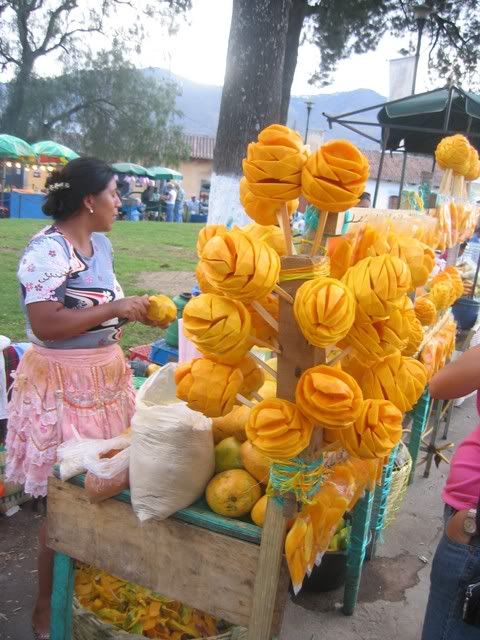
Le Merced Church. It had amazing architecture and engravings. We arrived during some ceremony or festival... I unfortunately cannot remember. I believe it might have something to do with Easter...?
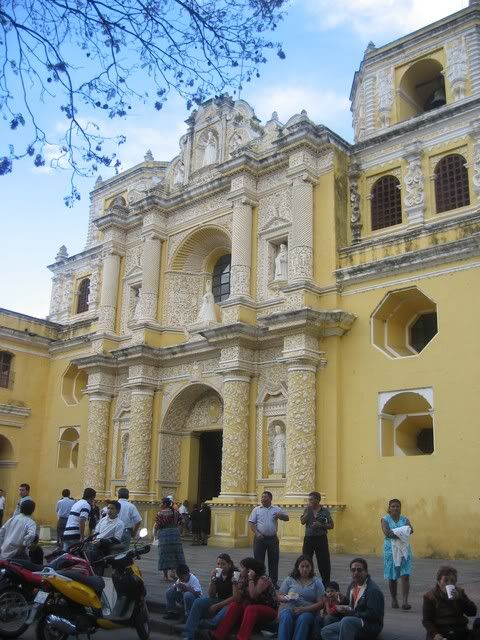
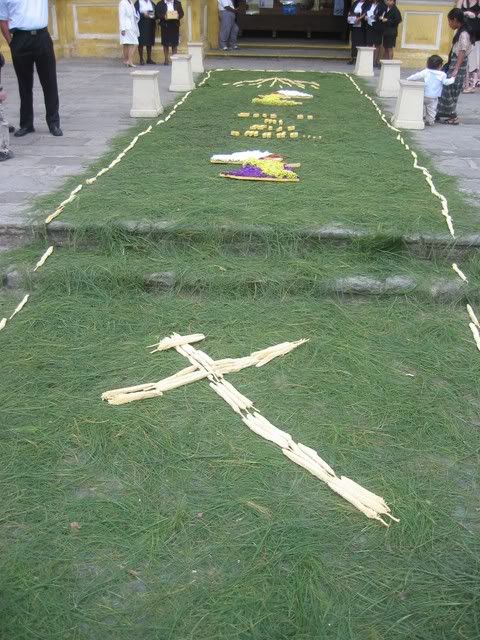
They had really creepy looking statues inside depicting the saints, Jesus Christ, etc.

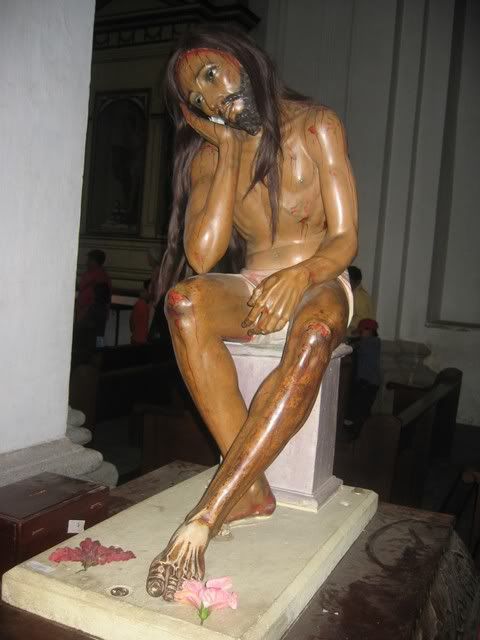
Inside was this beautiful artwork made of dyed maize flour.
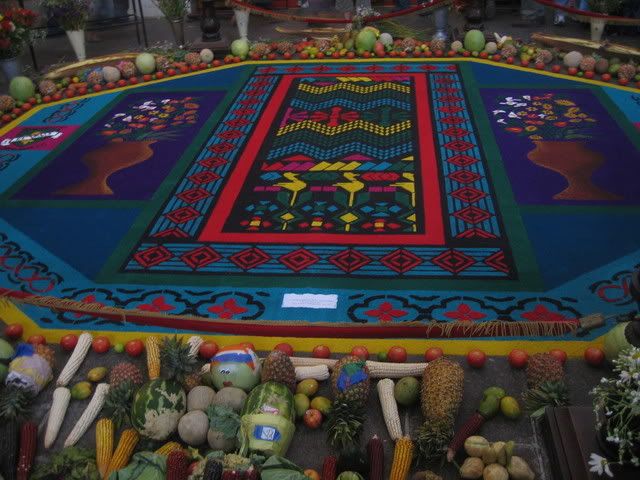
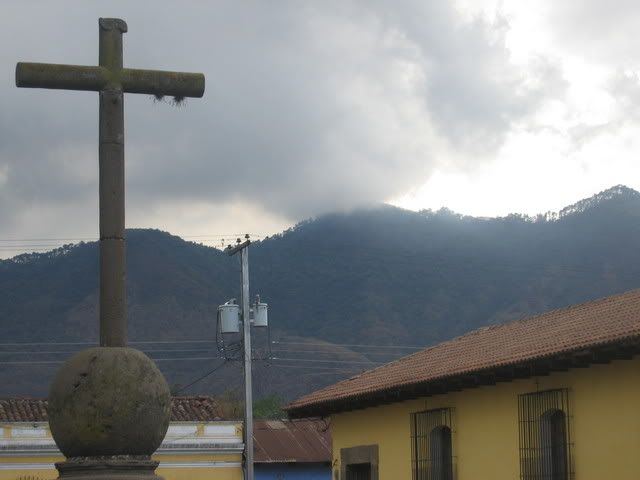
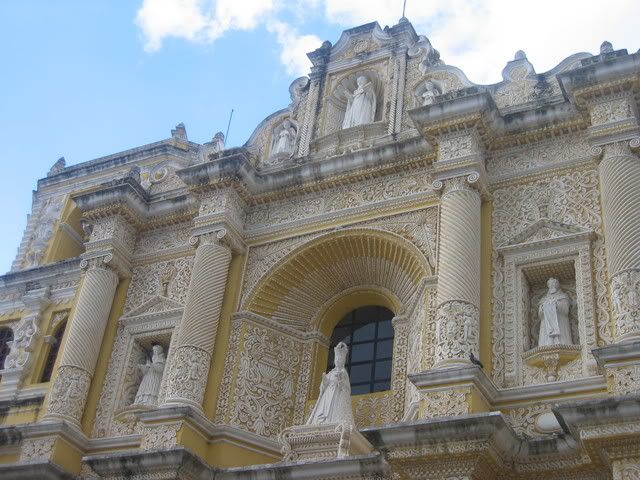
Walking around Antigua some more.
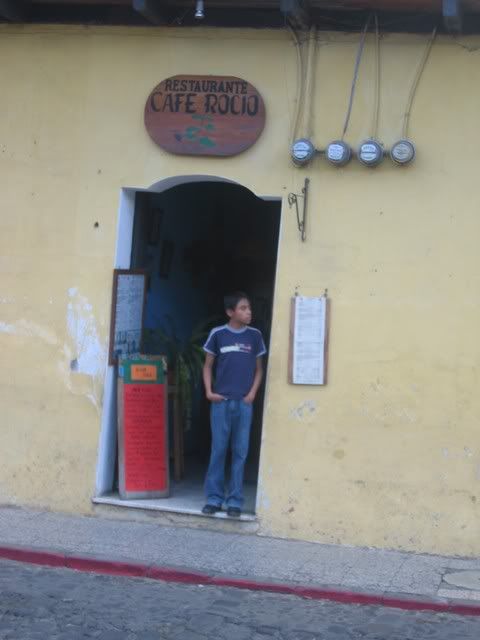
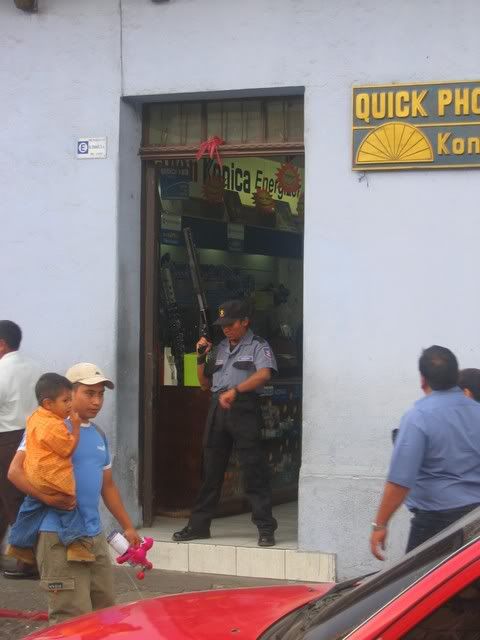
They had this really intense procession. Unfortunately, I was unable to capture more pictures since my camera ran out of batteries. :(
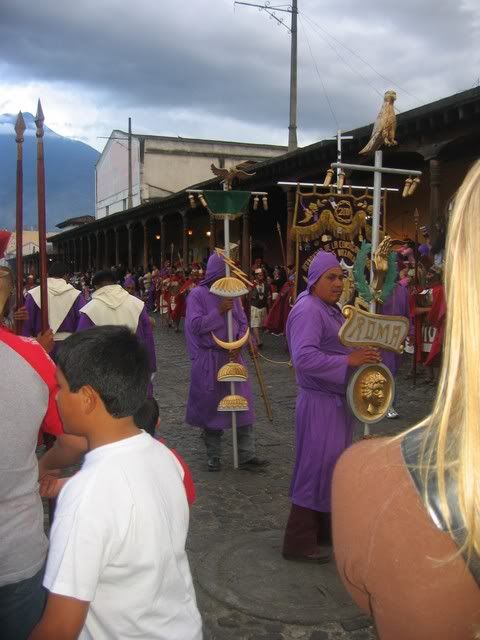
Then, after playing with the orphans for a bit, we went to the new location that the orphanage was going to move to. It was amazing. It went from what looked like a very small elementary school to a vast, expansive land with new beautiful buildings. We went there to check the place out, and finally to sort the most ridiculous bundle of donated clothes.
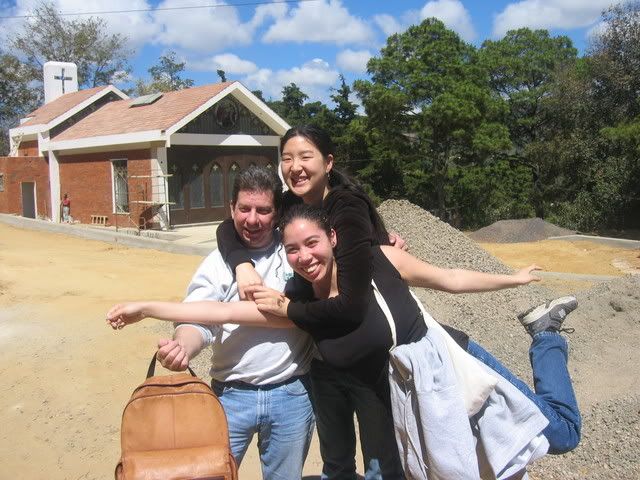
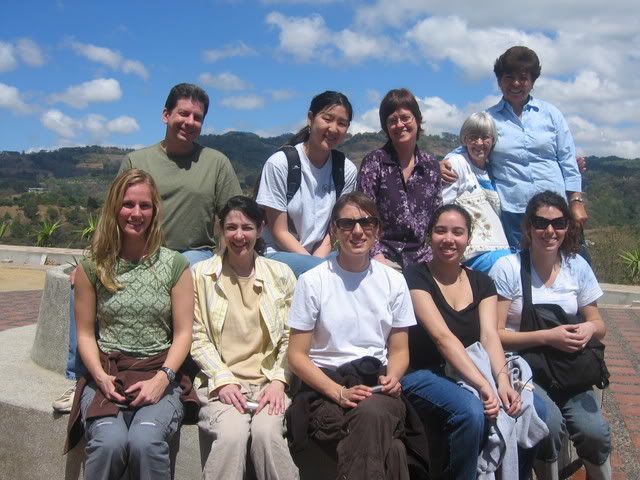
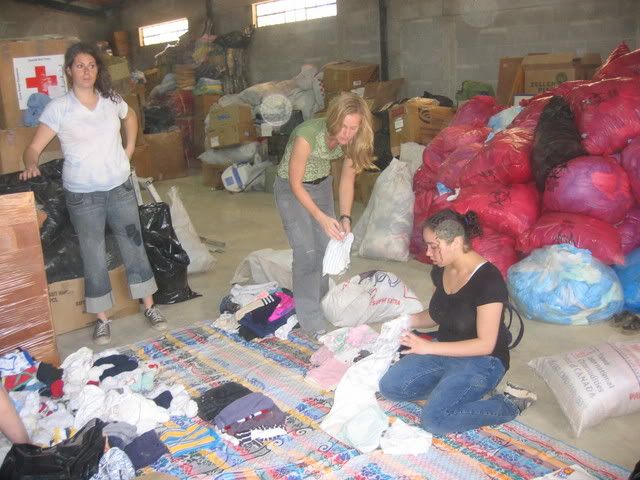
The shanty-towns we passed on the way home.
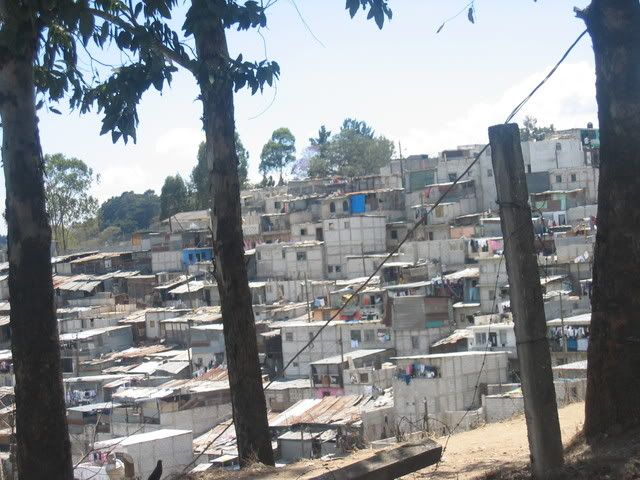

I think some of them might hate Americans. ...Who can blame them?
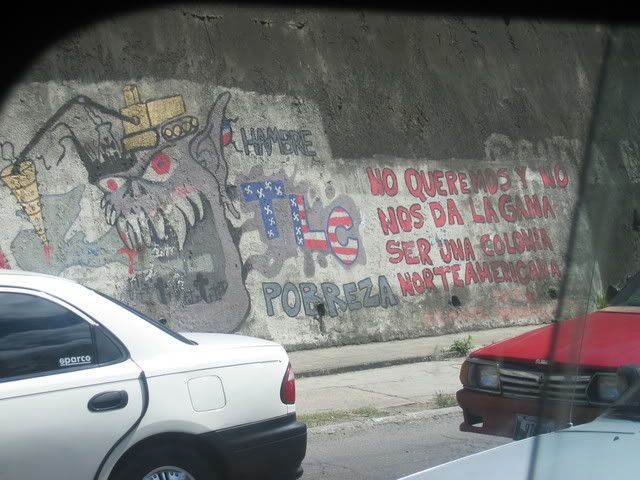
And it turns out, during that car-ride home, there was a large protest going on the streets. Instead of 20 minutes to get back to the CCS shelter, it took possibly up to three hours. I have never seen traffic so ridiculously backed up before.
Our pet parrot at the place. :)

We went to visit a famous castle/battlement, but I unfortunately cannot, for the life of me, remember what it was called. (This is what happens when you realize a year and a half later, that you should document everything.)

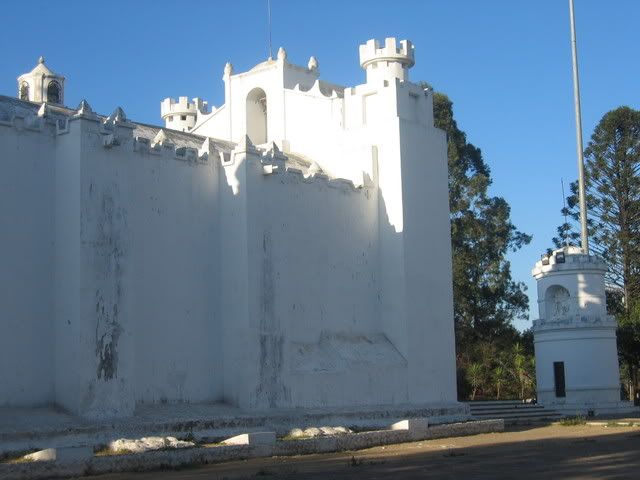
Some of the girls.
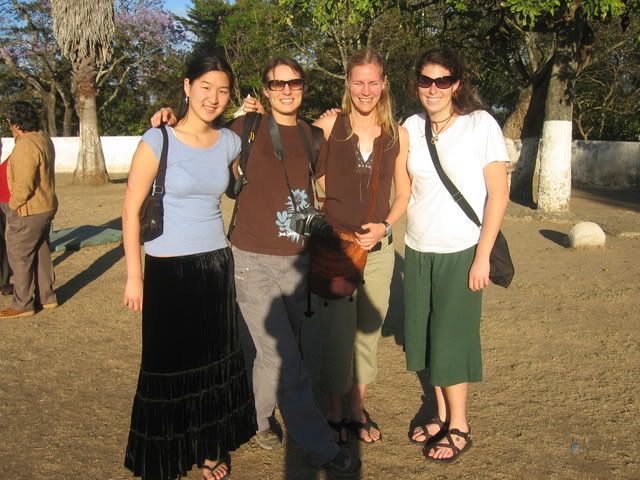
More sorting!

The mold and the dust became unbearable, so wore these dorky masks.
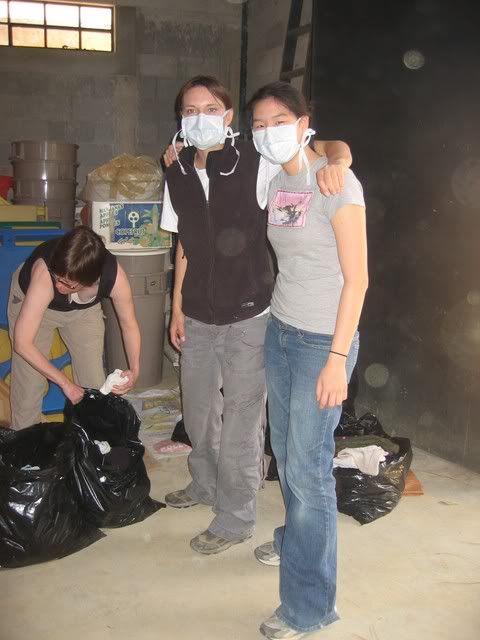
The pile of clothes we sorted!

Then we went to a coffee plantation thing! It was aewsome.
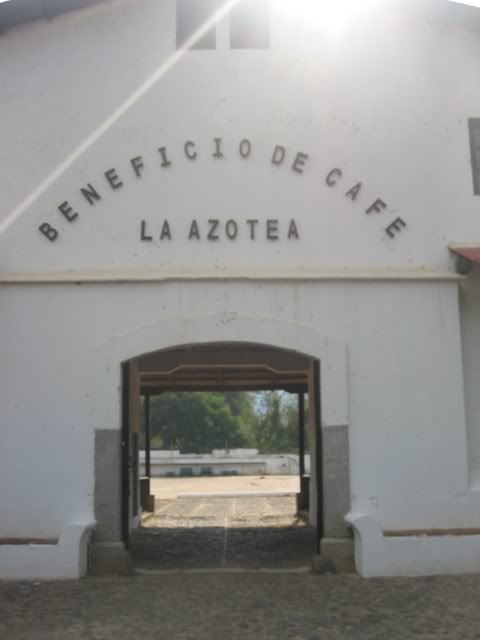
Coffee berries.

Back exploring Antigua.
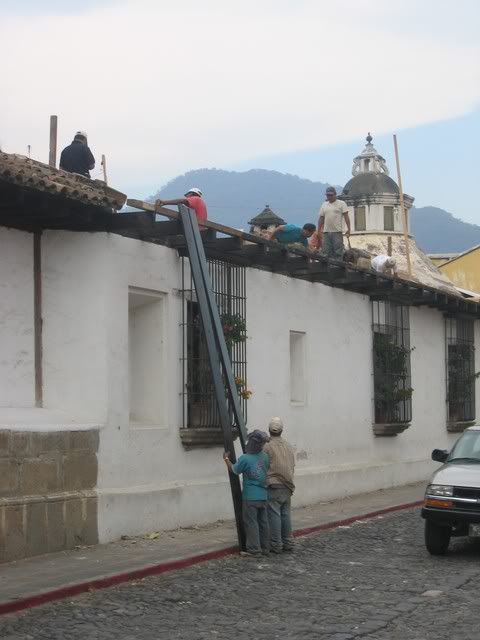
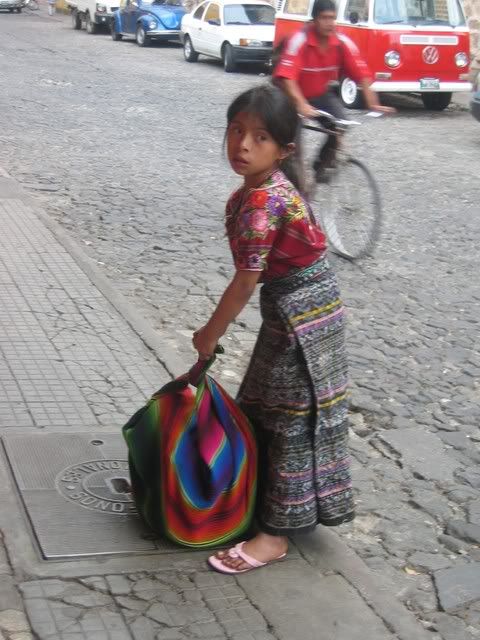
Then we went to a museum, where they had amazing chocolate (just cocoa powder, sugar, and a tad of cinnamon.) The artifacts inside were amazing. No pictures allowed, unfortunately.
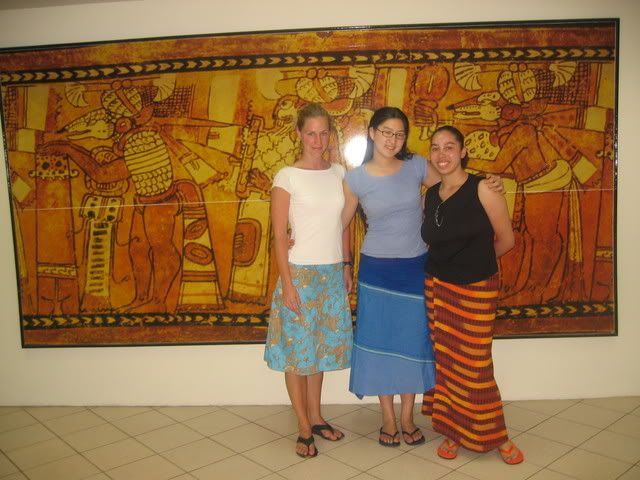
Oh, and we also were able to make our own "artifacts" out of clay. Mine is now sitting on my "travel shelf" in my room.
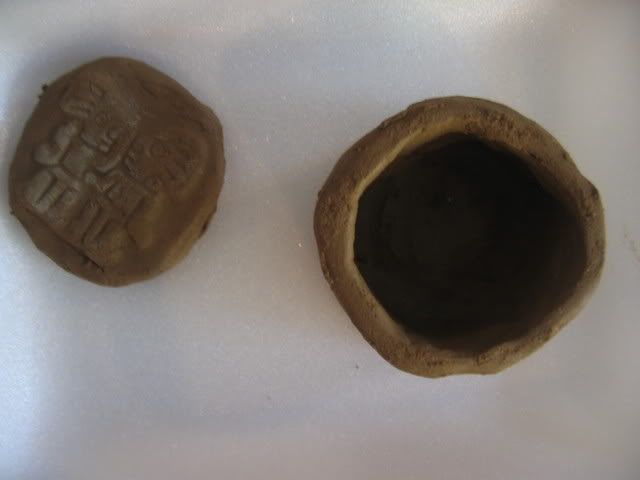
Then it was our final night out in Zone 10, the party zone of Guatemala! (Oh yes, Guatemala City is broken up into different zones. The center one, is the original site of Guatemala City, and each zone that is added on grows in a spiral formation around that center.)
Dinner!
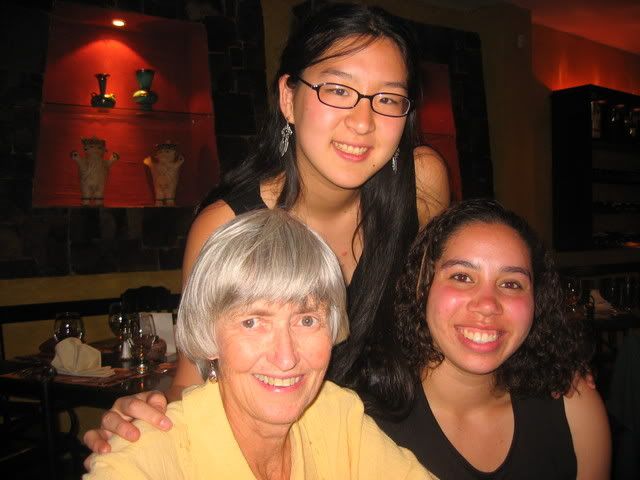
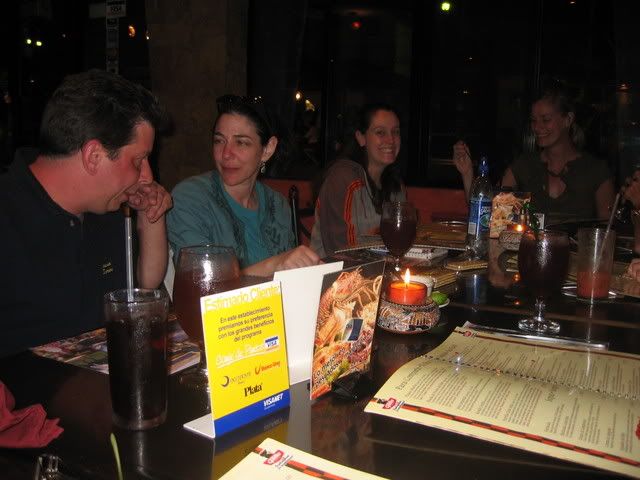
...in a place that had the oddest collection of... things?
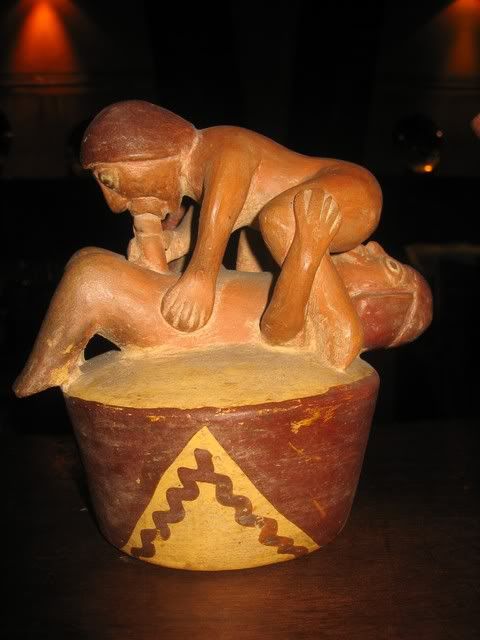
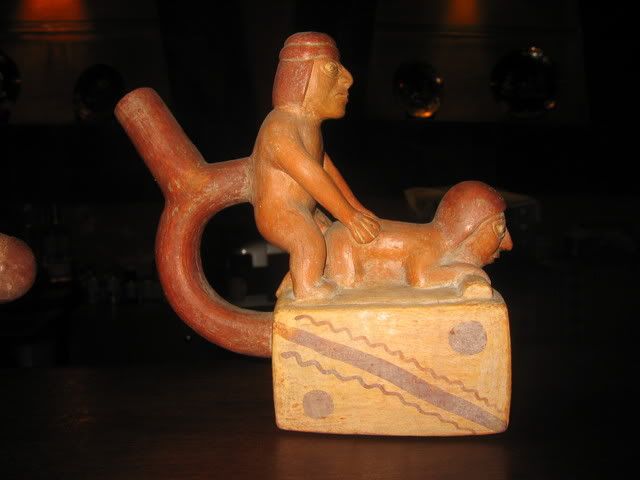
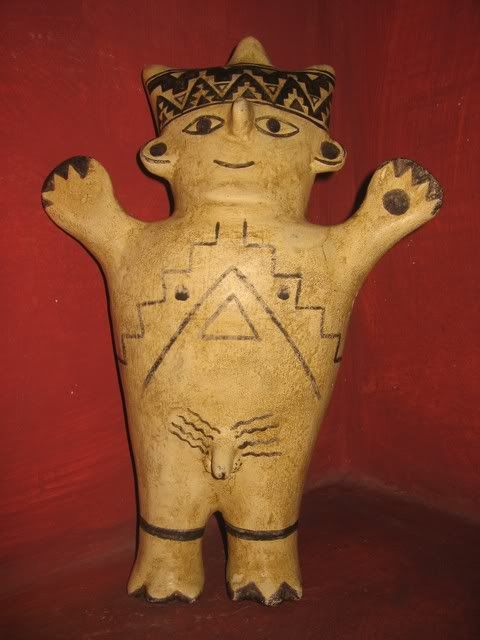
It was our final day in the orphanage. We played with the children all day, and took them out for a walk around the area. They were awesome. I managed to start something by taking the kids on my back, swinging them around, etc. I don't know if the doctors would have approved, but the kids sure did. Unfortunately, I cannot remember most of their names anymore. I had them documented somewhere, but I think it might have accidentally been deleted.
This was probably one of the favorites. She was adorable, but extremely shy.
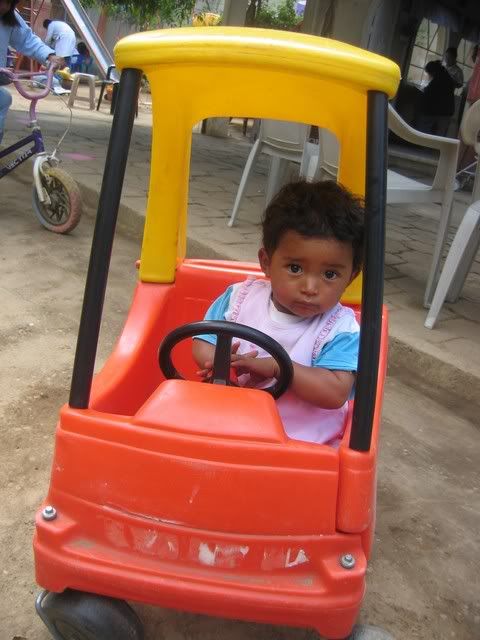
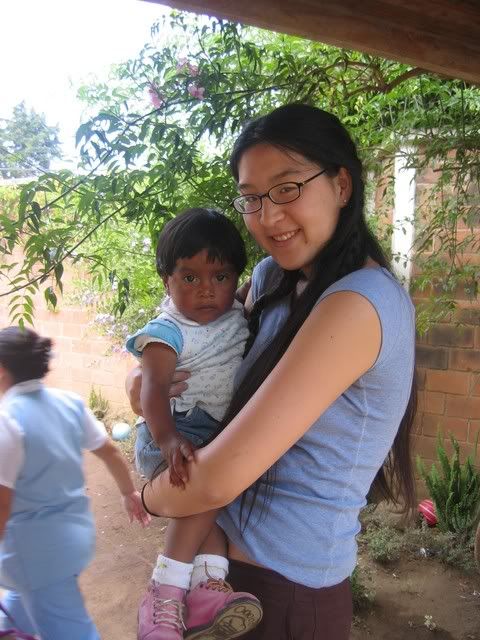
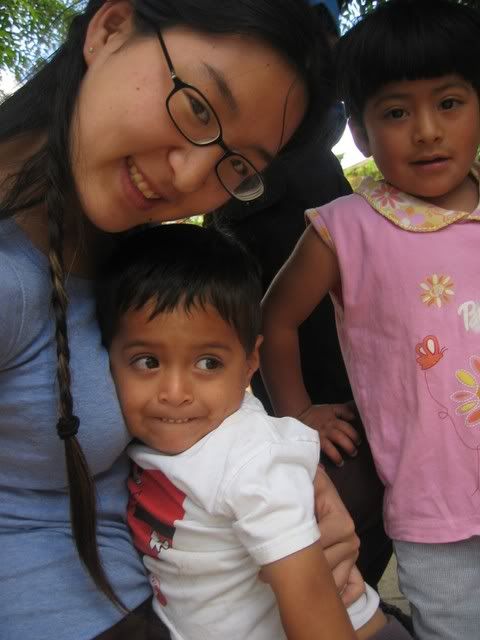
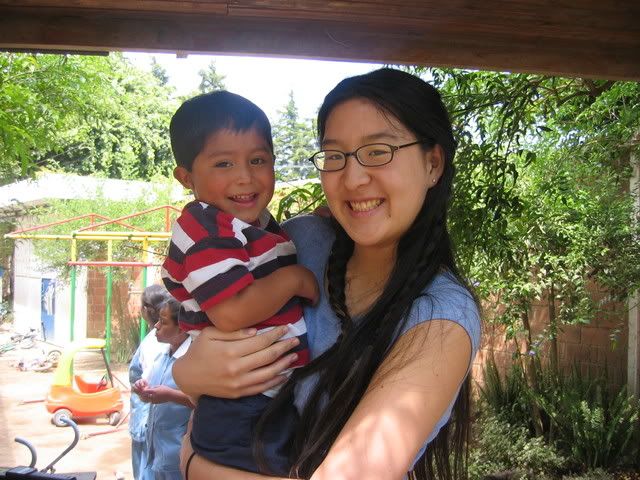
Personally, she was my favorite:
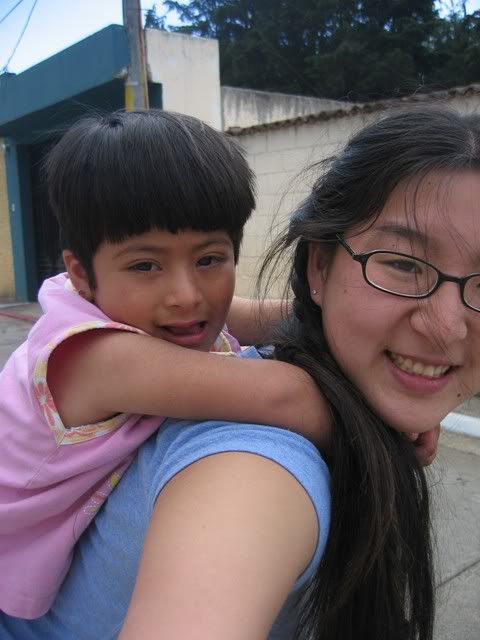
The cutest picture ever:
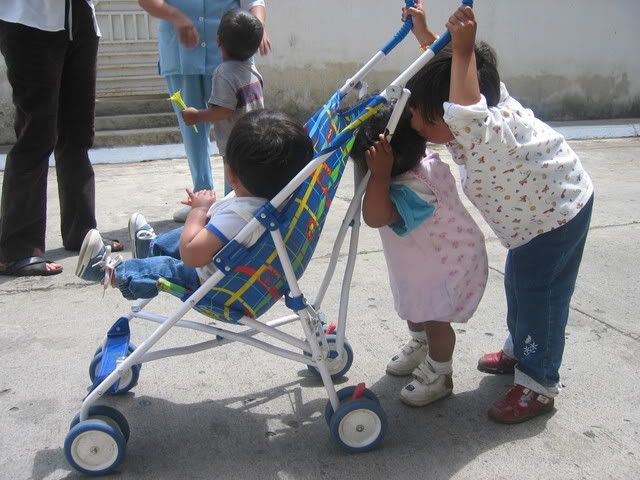
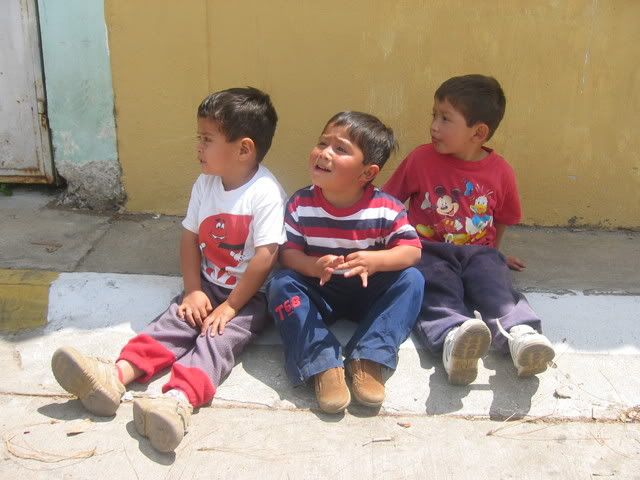
This little guy was Christopher.
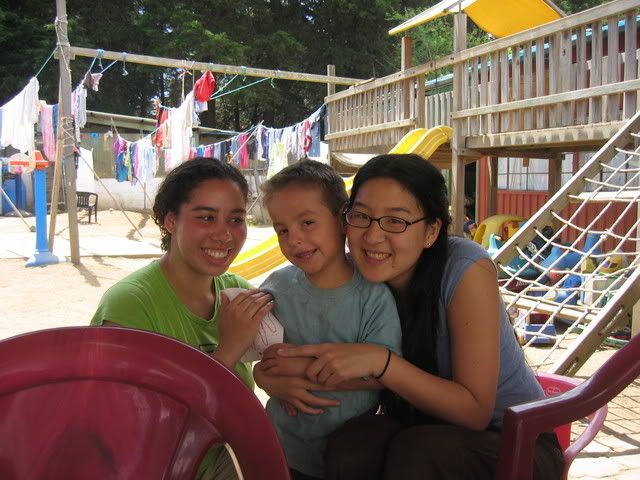
Soon, it was time to leave, and everybody put their hand prints with a name and a year on the wall.
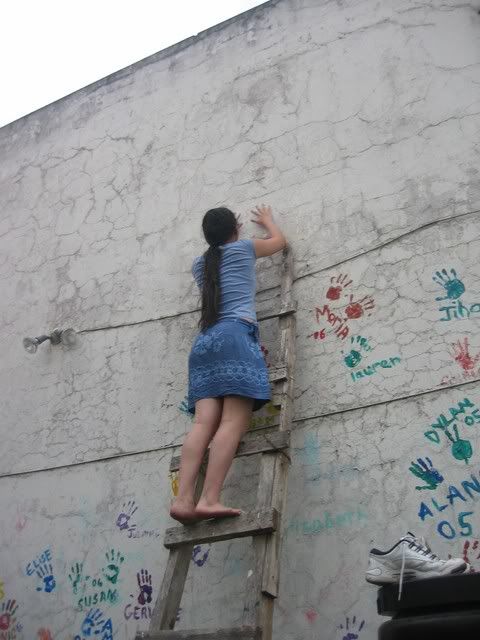
One more night of fun and dance.
...There was a creepy guy who asked me to dance. But hey, it was dancing, and it was in Guatemala. How could I refuse?
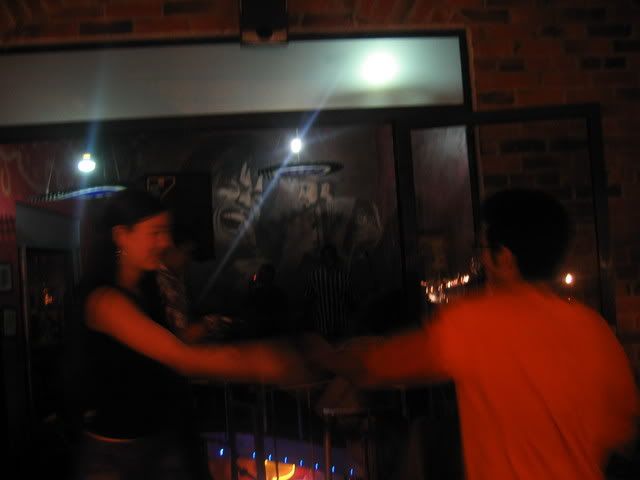

The morning of departure...
The parrot!
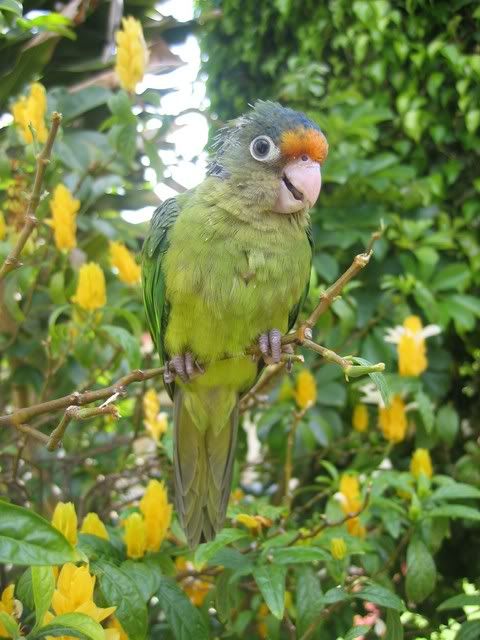
The wall.
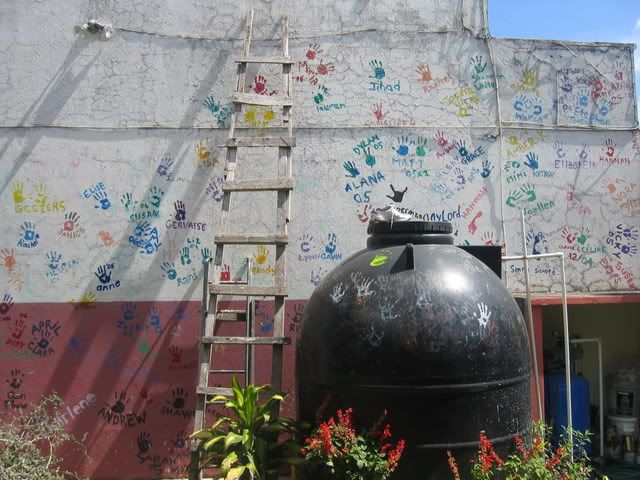
Of course, being the tallest chick ever, I needed to be the tallest hand-print.
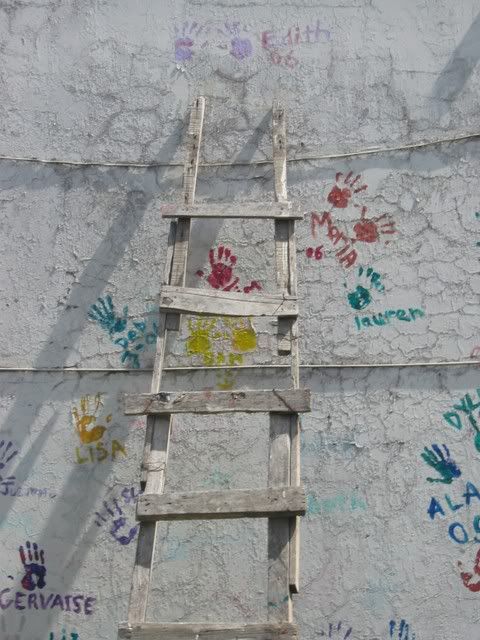
Our awesome driver:
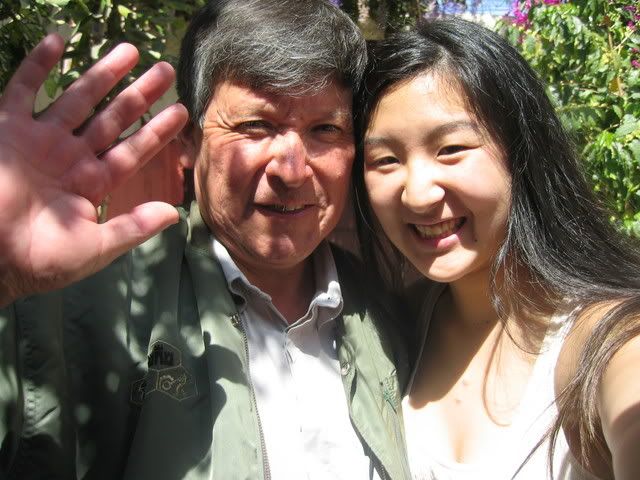
On the flight home.
I've decided that I am going to submit this for an Airline or flight magazine. ...Just kidding.
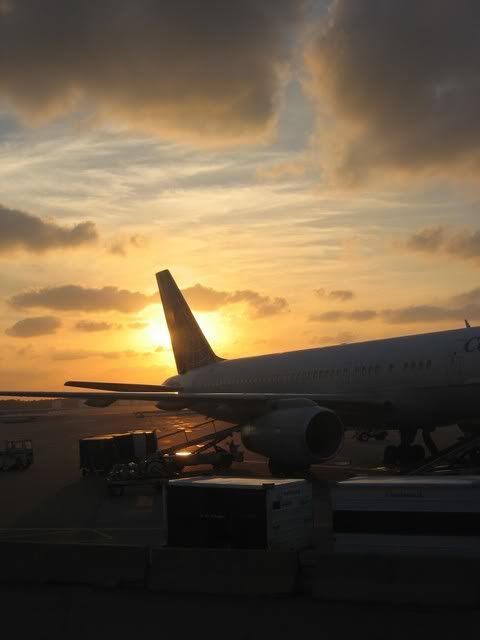
We had an awesome lightning show on the way back.
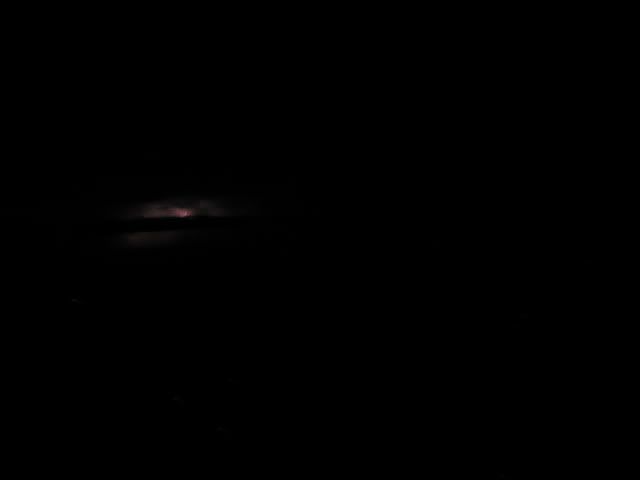
And that was all.
Here we go:
Holy crap, I'm on the plane and going. ...This will be interesting.

The group when we arrived.

Unfortunately, we were originally not allowed to take photos of the orphanage that we were working in. Because of the stigma that goes along with being HIV+, they were afraid that these pictures might be used against the children in the future. The orphanage, though, is amazing. They are being supported by UNICEF, and not only does the organization provide care and anti-retroviral (ARV) treatment to the orphans, but they also provide free treatment to those in the area whom are too poor to afford the medicines themselves. Additionally, the patients are provided free dental care, and other medical services.
So, for now, lots of pictures of us having fun in Guatemala.
Antigua. Antigua is an amazingly tourist-y place. Still, the architecture and the culture of the natives were able to shine through. Personally, I was torn. I was amazed and awed by the richness of the culture--the bright colors, the beautiful people, amazing handicrafts, the breath-taking architecture--and I wanted to take pictures to document everything, but at the same time, I felt horrible watching people live in poverty and subjecting themselves to be just a display for rich tourists. Still, I suppose I still have some pictures.
When we first arrived in Antigua:

Inside a hotel.


On the streets.




The famous Volcan de Agua (Volcano of Water) overlooking Antigua.

A... city hall type thing...?

We had lunch somewhere. They had an amazing jalapeno turkey noodle soup.

The beer in Guatemala.

And more pictures...



Probably one of my favorite pictures from Guatemala.

Mangos on a stick!

Le Merced Church. It had amazing architecture and engravings. We arrived during some ceremony or festival... I unfortunately cannot remember. I believe it might have something to do with Easter...?


They had really creepy looking statues inside depicting the saints, Jesus Christ, etc.


Inside was this beautiful artwork made of dyed maize flour.



Walking around Antigua some more.


They had this really intense procession. Unfortunately, I was unable to capture more pictures since my camera ran out of batteries. :(

Then, after playing with the orphans for a bit, we went to the new location that the orphanage was going to move to. It was amazing. It went from what looked like a very small elementary school to a vast, expansive land with new beautiful buildings. We went there to check the place out, and finally to sort the most ridiculous bundle of donated clothes.



The shanty-towns we passed on the way home.


I think some of them might hate Americans. ...Who can blame them?

And it turns out, during that car-ride home, there was a large protest going on the streets. Instead of 20 minutes to get back to the CCS shelter, it took possibly up to three hours. I have never seen traffic so ridiculously backed up before.
Our pet parrot at the place. :)

We went to visit a famous castle/battlement, but I unfortunately cannot, for the life of me, remember what it was called. (This is what happens when you realize a year and a half later, that you should document everything.)


Some of the girls.

More sorting!

The mold and the dust became unbearable, so wore these dorky masks.

The pile of clothes we sorted!

Then we went to a coffee plantation thing! It was aewsome.

Coffee berries.

Back exploring Antigua.


Then we went to a museum, where they had amazing chocolate (just cocoa powder, sugar, and a tad of cinnamon.) The artifacts inside were amazing. No pictures allowed, unfortunately.

Oh, and we also were able to make our own "artifacts" out of clay. Mine is now sitting on my "travel shelf" in my room.

Then it was our final night out in Zone 10, the party zone of Guatemala! (Oh yes, Guatemala City is broken up into different zones. The center one, is the original site of Guatemala City, and each zone that is added on grows in a spiral formation around that center.)
Dinner!


...in a place that had the oddest collection of... things?



It was our final day in the orphanage. We played with the children all day, and took them out for a walk around the area. They were awesome. I managed to start something by taking the kids on my back, swinging them around, etc. I don't know if the doctors would have approved, but the kids sure did. Unfortunately, I cannot remember most of their names anymore. I had them documented somewhere, but I think it might have accidentally been deleted.
This was probably one of the favorites. She was adorable, but extremely shy.




Personally, she was my favorite:

The cutest picture ever:


This little guy was Christopher.

Soon, it was time to leave, and everybody put their hand prints with a name and a year on the wall.

One more night of fun and dance.
...There was a creepy guy who asked me to dance. But hey, it was dancing, and it was in Guatemala. How could I refuse?


The morning of departure...
The parrot!

The wall.

Of course, being the tallest chick ever, I needed to be the tallest hand-print.

Our awesome driver:

On the flight home.
I've decided that I am going to submit this for an Airline or flight magazine. ...Just kidding.

We had an awesome lightning show on the way back.

And that was all.
Labels:
Guatemala
Subscribe to:
Posts (Atom)
